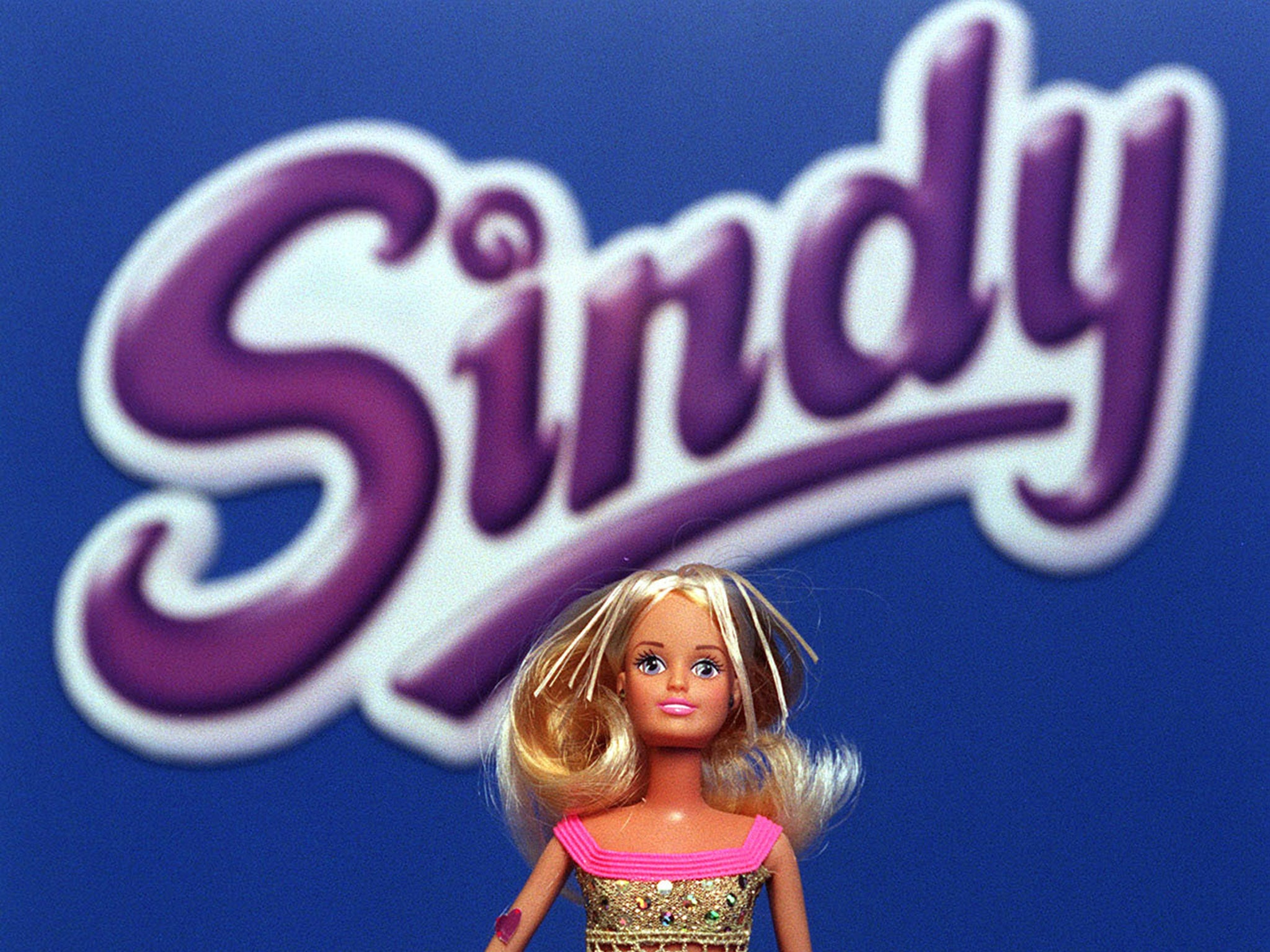Life in plastic, it’s fantastic... unless you’re a Sindy girl in a Barbie world
By the eighties, Barbie had already been a college graduate, Olympic medallist, astronaut and a surgeon, writes Rachel Huber. The only career I remember Sindy having was as a nurse


In case you’ve missed the latest in doll discourse, Barbie is back and she’s had a feminist makeover. Barbiemania’s recent stranglehold on cultural commentary may have many questioning Barbie’s feminist credentials, but for Xennials like me, the idea that Barbie should be reclaimed as a feminist icon doesn’t seem so far-fetched. Sindy, the doll who colonised our Eighties toy boxes, was a far worse role model.
She may have slipped into obscurity in recent years, but throughout the late Sixties and Seventies, Britain’s answer to Barbie reigned supreme as the most sought-after toy in the country. For those of us sandwiched between Generation X and millennial kid cultures, that equalled Barbie-to-Sindy ratios heavily skewed towards Sindy, plenty of Sindy hand-me-downs, and a desperate longing for the expensive imported Barbies filling the pages of the Argos catalogue.
Both dolls represented blonde, blue-eyed, skinny whiteness at its most exclusionary. But for all the go-getting, tanned sexiness that Barbie conjured, Sindy, with her wide eyes, button nose, broad forehead and sensible clothes embodied something more sinister. Against Barbie’s cheerleader-like enthusiasm for every new fashion, trend or hobby, Sindy appeared fixed in a toxic aspic of Sixties womanhood. And not just because her features were designed to echo the girl-next-door wholesomeness of the Sixties actress Hayley Mills. Or, because Paul, Sindy’s pursed-lipped take on Ken, was modelled after Paul McCartney.
While Barbie had fashion accessories, Sindy accessorised her home. Everything from kitschy hostess trolleys to hyper-realistic “wash day” accessories, ironing boards, to tiny white tassel-trimmed toilet mats, told Sindy girls that ambition lay in making sure men’s pee didn’t stain your bathroom carpet.
There was a whiff of retrograde class politics to Sindy too. When she wasn’t role-modelling idealised suburban domesticity, Sindy loved nothing more than the Sloaniness of horse riding. This aspirational nod to the appeal of the upper class even became sealed into Sindy’s fashion sense when the Emanuels – the designers behind Princess Diana’s wedding dress – were enlisted to design her clothes. Not that Sindy’s perfectly arched feet weren’t always firmly and sensibly planted on the ground. While escapism, bikinis and palm trees awaited “Florida Vacation Barbie”, Sindy looked forward to the delights of a drizzly escape to the British countryside with the family frame tent.
For those of us caught between Sindy’s heyday and the rise of Barbie, Barbie at least modelled the faint possibility that women could strive to be whatever they wanted. By the Eighties, Barbie had already been a college graduate, Olympic medallist, astronaut and a surgeon. The only career I remember Sindy having was as a nurse.
While the assertion that a doll can set your feminist trajectory in life is probably dubious, the ideals that Sindy whispered to my childhood psyche certainly explain a lot about my own feminist evolution. After all, given the empty void of female possibility that Sindy represented, is it any wonder that mid-Nineties “ladette” culture seemed so radically empowering? Or, that imitating men with if-you-can’t-beat-them-join-them verve felt like the only way to equality? Given Sindy’s primness, is it shocking that early 2000s “raunch” feminism’s call to objectify ourselves seemed like a feasible feminist philosophy?
In Sindy’s wake, it makes sense that for many of my microgeneration our first real re-engagement with feminism was to come with the 2004 resurgence of the Reclaim the Night movement and the tangibility of its marches. Even the way we Sindy girls often bounced along, cherry-picking from the performative models of late 2010s feminism without questioning their hypocrisies makes sense too. Packaged in millennial pink with all the commercial lure of the hot new Barbies we were once denied, it’s no wonder that girl boss culture and the sleekness of Sheryl Sandberg’s “Lean-In” feminism had its sparkle. Even if we didn’t entirely buy their trickle-down feminist ideologies.
Since then, Deborah Francis-White’s take on guilty feminism has captured something of our experience too. The idea of constantly looking over our should to check whether we’re doing feminism “right” chimes with many of us who shudder at our Nineties selves.
That’s not to say that things are all bad for us Sindy girls. There are lessons to be learned from our evolution in Sindy and Barbie’s dual shadows. Because, if dipping in and out of feminism’s trends without witnessing any progress on issues that matter can teach us anything, perhaps it’s that feminism isn’t about role playing or performativity, it’s about action. And if Barbie hasn’t helped deliver income equality or better childcare access, then maybe it’s because feminism isn’t an identity or label we can just decide to claim as if we’re picking between Cali-Girl Barbie, Jewel Girl Barbie or Feminist Barbie.
Join our commenting forum
Join thought-provoking conversations, follow other Independent readers and see their replies
Comments

Bookmark popover
Removed from bookmarks